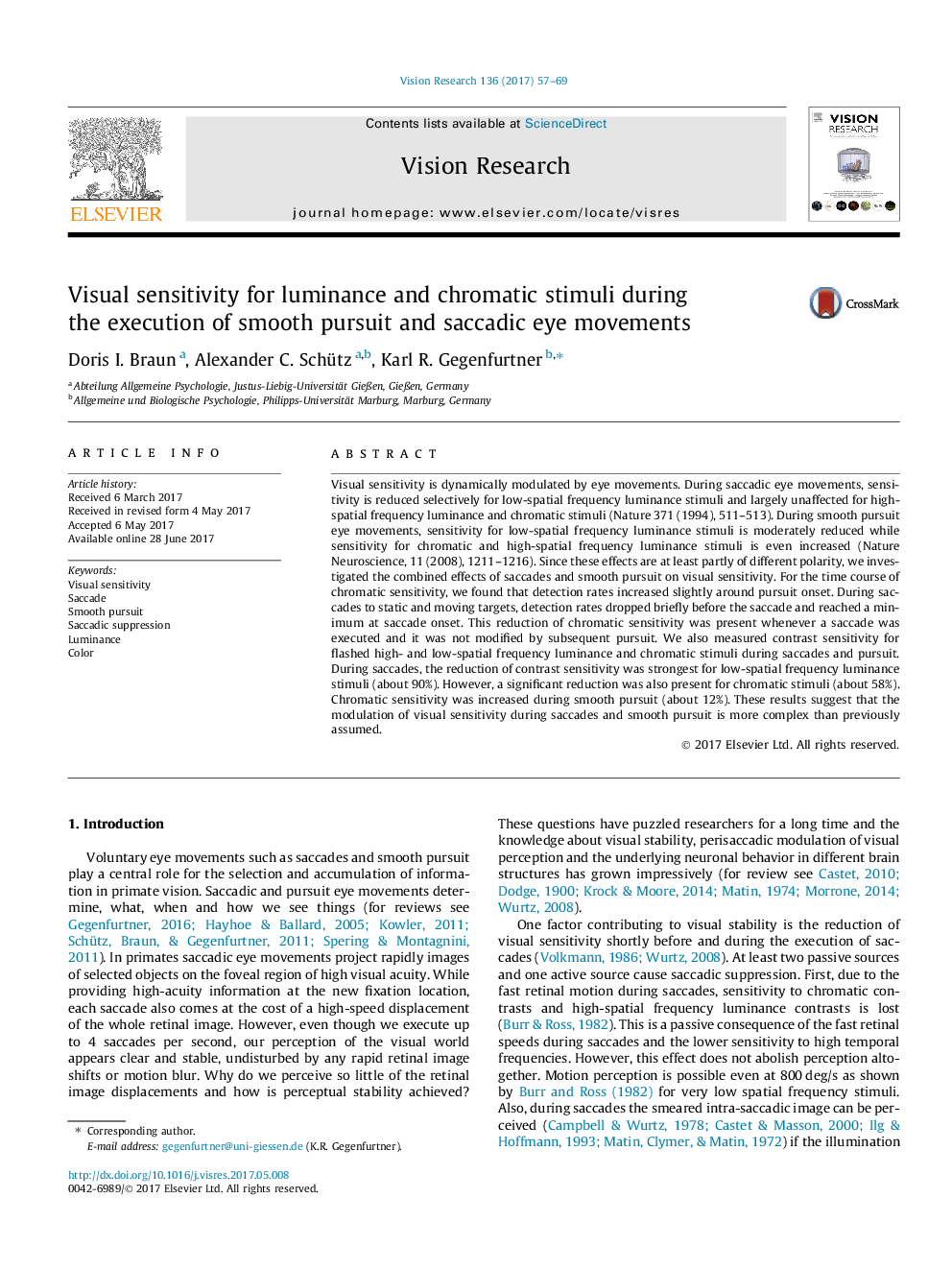| Article ID | Journal | Published Year | Pages | File Type |
|---|---|---|---|---|
| 5705860 | Vision Research | 2017 | 13 Pages |
Abstract
Visual sensitivity is dynamically modulated by eye movements. During saccadic eye movements, sensitivity is reduced selectively for low-spatial frequency luminance stimuli and largely unaffected for high-spatial frequency luminance and chromatic stimuli (Nature 371 (1994), 511-513). During smooth pursuit eye movements, sensitivity for low-spatial frequency luminance stimuli is moderately reduced while sensitivity for chromatic and high-spatial frequency luminance stimuli is even increased (Nature Neuroscience, 11 (2008), 1211-1216). Since these effects are at least partly of different polarity, we investigated the combined effects of saccades and smooth pursuit on visual sensitivity. For the time course of chromatic sensitivity, we found that detection rates increased slightly around pursuit onset. During saccades to static and moving targets, detection rates dropped briefly before the saccade and reached a minimum at saccade onset. This reduction of chromatic sensitivity was present whenever a saccade was executed and it was not modified by subsequent pursuit. We also measured contrast sensitivity for flashed high- and low-spatial frequency luminance and chromatic stimuli during saccades and pursuit. During saccades, the reduction of contrast sensitivity was strongest for low-spatial frequency luminance stimuli (about 90%). However, a significant reduction was also present for chromatic stimuli (about 58%). Chromatic sensitivity was increased during smooth pursuit (about 12%). These results suggest that the modulation of visual sensitivity during saccades and smooth pursuit is more complex than previously assumed.
Related Topics
Life Sciences
Neuroscience
Sensory Systems
Authors
Doris I. Braun, Alexander C. Schütz, Karl R. Gegenfurtner,
